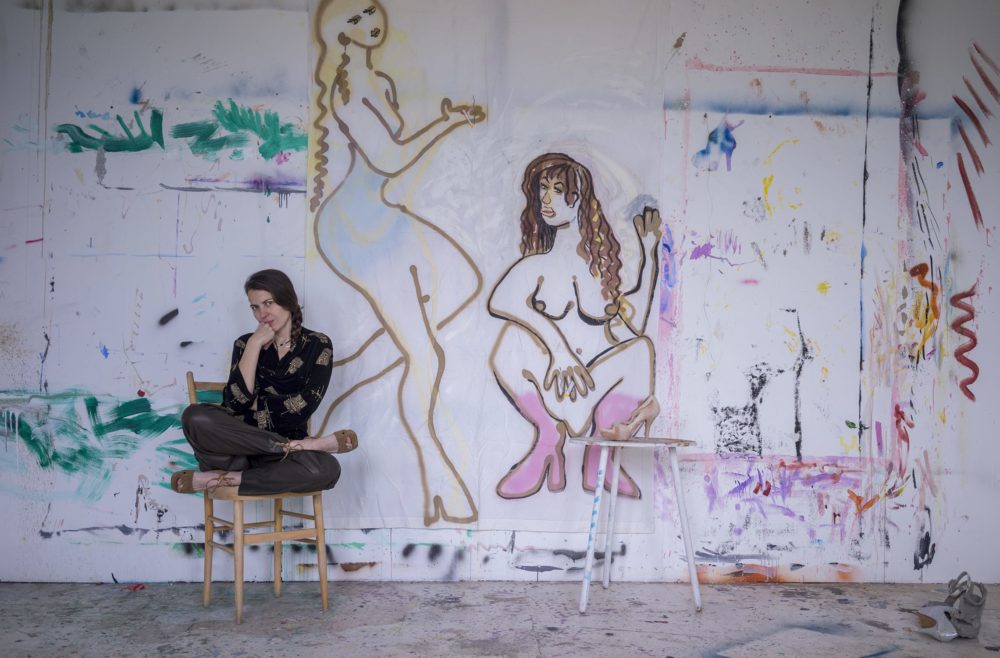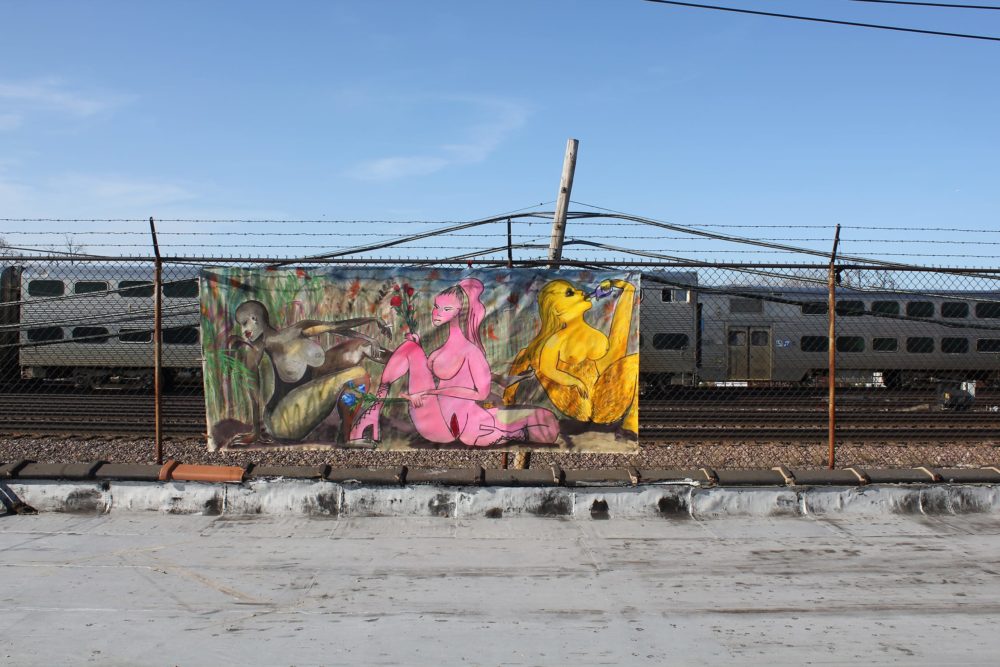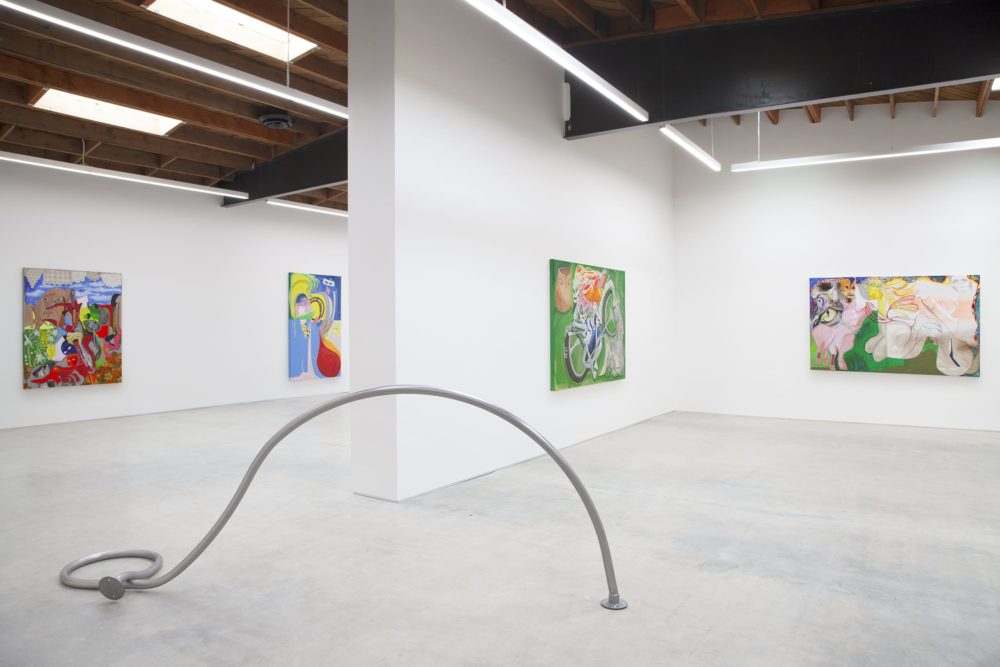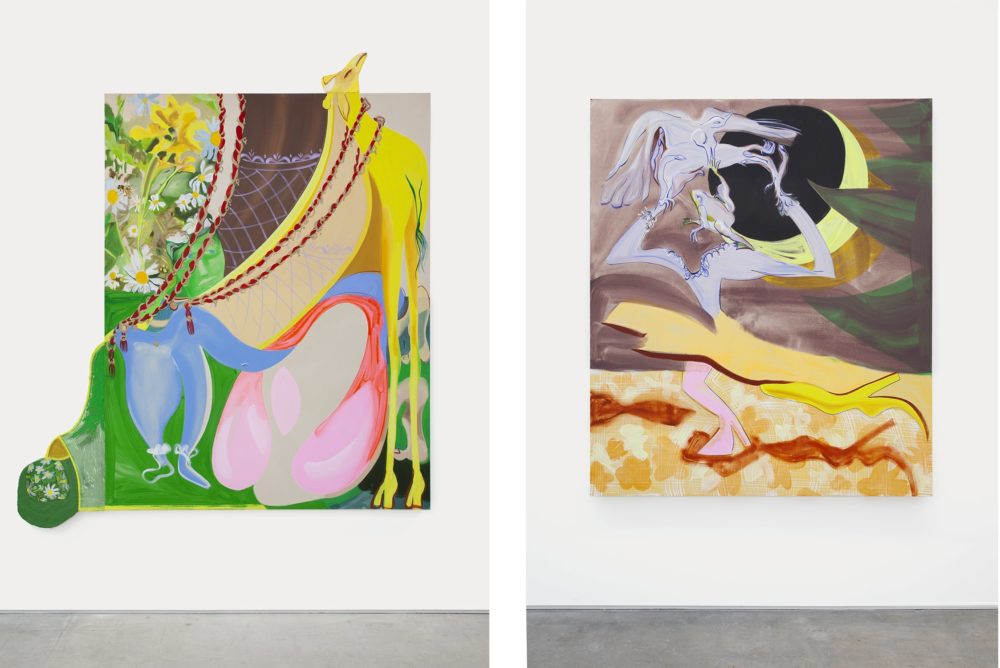
- Source: ART BASEL
- Author: FIONA ALISON DUNCAN
- Date: OCTOBER 25, 2022
- Format: ONLINE
How I Became an Artist: Chelsea Culprit
The American artist on fiber, family, life cycles, and how art has always been an internal space for contemplation
‘My parents are creative and both worked with their hands. They were friends with artists and creative people. One of their friends was a painter and from a young age, I spent time in that studio. This was in Paducah, Kentucky in the late 1980s. My dad did custom carpentry restoring Victorian riverfront buildings. The painter friend and my mom, amongst others, ended up founding an art framing cooperative where artists would also rent studios. It was an exciting environment to be in.

Chelsea Culprit. Photo by Leonardo Kaplan.

Midnight Garden at the artist's studio in Chicago. Photo by the artist.
‘In Paducah, there is a quilt museum, an annual quilt festival, an active fiber tradition, and many fiber artists. I’m a magpie: I’ll keep scraps and fragments of material I touched years ago if they were beautiful and made me feel a certain way. Occasionally, I’ll come across a quilting scrap and be filled with the energy it carries.
‘I love being present in different places, experiencing what’s there and what lingers. I lived in Chicago for a long time; there, I felt influenced by the old warehouses in post-industrial districts. There’s something humbling about being at an edge of a place, after its heyday. The works of art that most influenced me are from the Art Institute of Chicago. I could name so many: Archibald Motley’s Nightlife [1943], Leon Golub’s Interrogation II [1981], Gertrude Abercrombie’s The Past and the Present [c. 1945], Georgia O’Keeffe’s Sky Above Clouds IV [1965]. I went to school there and had the pleasure of frequenting this incredible museum and being mesmerized by its beautiful paintings.
‘Another place that is a big part of my life is Mexico City, which feels like a massive painting. The human touch is everywhere. People relate to the built environment in a completely different way than in the US. A decaying cement wall might be patched up with bathroom tiles that are hand-painted or feature an obscure printed pattern from the 1960s. Also, the way people trellis plants – there’s just so much gesture in the city.

Installation view of Chelsea Culprit's exhibition 'Pole on Break', Queer Thoughts, New York City. Courtesy of the artist and Queer Thoughts, New York.
‘I’m living in the Catskill Mountains now. The sky is this brilliant baby blue and all of the orange leaves are crisp and psychedelic against it. The seasonal cycles, the cycles of life and death, are super present here. In winter, it’s completely still. Every moment in the Catskills, I feel aware of my finitude but also of life and how fragile and mysterious that dichotomy is.
‘I love how paintings are records of the past. I enjoy looking back at a piece from ten years ago and clearly seeing what I’d been thinking and feeling. It’s a way of knowing yourself over time.
‘Painting was always an option for me. When I left school, I was into performance but, within a few years, painting became part of the performances. I was working at a family-run paint and wallpaper store in Chicago at the time; my first job in Paducah had also been at a paint store. I color matched and mixed paint based on weird things people brought in – like a banana peel or a faded sweater. Later, I worked nights for a decorative painting company. We painted trompe-l’oeil scenes and historic wallpapers that are no longer produced. I learned more about the craft of painting from my coworkers than in school.
‘To this day, crayon is probably my number one tool. I doodle and sketch a lot, and make underdrawings with crayons. It’s the most powerful, simple medium. Crockett Johnson’s Harold and the Purple Crayon [1955] is one of my favorite books. I totally live by the possibility that any reality can be created with a crayon. The space of art is where anything can be imagined, where your wildest, unknown desires can be found and expressed.

Installation view of Chelsea Culprit's exhibition 'Amygdala in Repose', Morán Morán, Los Angeles, 2022. Courtesy of Morán Morán.

Left: Chelsea Culprit, Whose Dog is That? Interspecies Orgasm, 2022. Right: Chelsea Culprit, Divine Madness, 2022. Both images: Courtesy of Morán Morán.
‘I became an artist by continually chasing artistic experiences, especially those most true to qualities of art that originally inspired me. Regardless of life’s shifting externals, one constant is the internal space art offers. From an early age, I found that art afforded me a space that was quiet, peaceful, and safe – a meditation space without expectations – where I could just be in the presence of this experience and in conversation with it. Art is powerful because it can alter reality and be accessed anytime, anywhere, and with few material necessities – in some cases none. Making the commitment to choose that space and feeling is how I became an artist. At every turn, in every opportunity or sacrifice, I chose whatever situation facilitated mental, physical, and social space for art. Practically, that meant building out live/work spaces, organizing exhibitions with friends, and making art instead of doing other things, even without an audience. It especially meant surrounding myself with other people who loved art as much as me. Art nourishes the soul and mind when there is nothing else; it seems obvious to trust it over anything else.’

